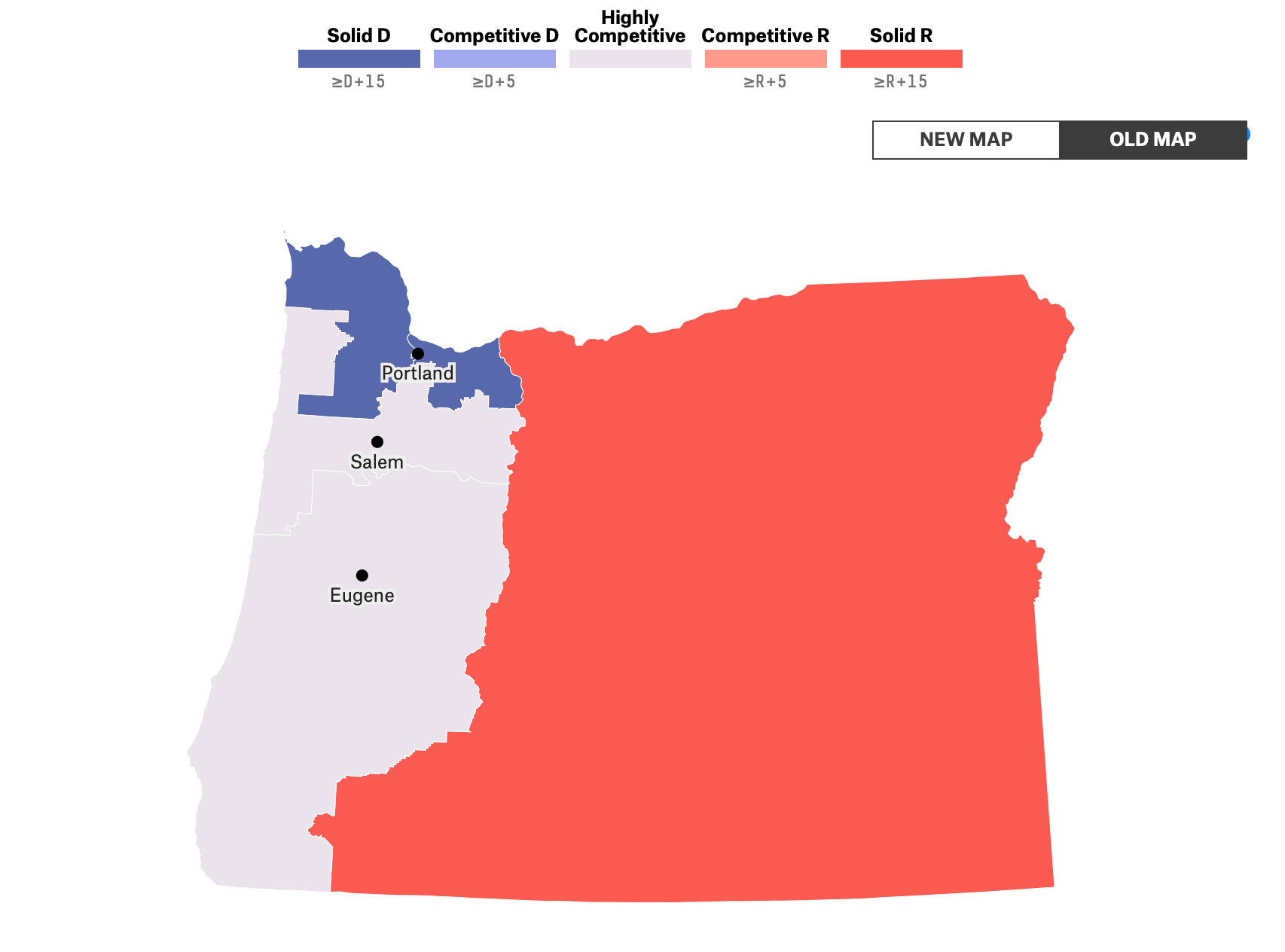5. The new 6th district’s population is concentrated along Interstate 5 from Tigard to Salem. With no incumbent and a modest Democratic registration advantage, it is wide open.
6. The Democrats maintain a partisan advantage in all districts, save for the 2nd (Table 2). The slight reduction in the 3rd district and the significant increase in the 1st district won’t materially change the chances of Democrats winning those districts. As we go to post, State Representative Andrea Salinas (D-Lake Oswego) has announced her candidacy for the new Oregon 6th. Although Salinas chaired the House Redistricting Committee, she nonetheless lives a mile east of the new Oregon 6th in the revised Oregon 5th. To run for Congress in Oregon, one need only live in Oregon, not necessarily the district. Salinas has an Oregon League of Conservation Voters lifetime rating of 94 percent (100 percent in 2021 and 88 percent in 2019). Also announced for the Democratic primary is Multnomah County Commissioner Loretta Smith, who also doesn’t live in the new Oregon 6th. She’s retained a realtor but is awaiting the outcome of any court challenges to the new district lines before moving. Undoubtedly, more candidates will arise for this open seat.
7. Republicans have to be in some congressional district, so the Democrats packed more of them into their sacrificial 2nd district (Table 2), much, as a resident of Ashlandia, to my personal chagrin.
8. Representative Kurt Schrader is one of nineteen House members who have banded together as Blue Dog Democrats. A BDD was originally “a Democrat from a southern state who has a conservative voting record.” The geographic limitation is no longer operable. Although the geographic footprint of the revised 5th district has changed dramatically, Schrader’s formerly slight partisan registration advantage remains slight (Table 2). While his conservative posture has generally helped before general elections, Schrader should be concerned about being “primaried”—especially as Bend increasingly trends blue.
9. The new map was drawn fundamentally to protect incumbents of either party (Table 2). If I were drawing the maps, I would have spread the Democrats around more, making perhaps even the 2nd district competitive. Any advantage greater than D+20 is a total waste.
10. As the system is rigged to favor two major parties, all the focus is on Democrats and Republicans. It’s worth noting that there are more nonaffiliated voters in Oregon than Republicans, and if trends continue, nonaffiliated voters will soon outnumber Democrats (Table 3 and Graph 1).



















![Figure 1. Very rare in Oregon, the fisher (Martes pennanti) has been the victim of trapping and habitat loss. It needs dense, mature forests with a deciduous component. Source: Bruce Hayward (first appeared in Oregon Wild: Endangered Forest Wilderness [Timber Press 2004]).](https://images.squarespace-cdn.com/content/v1/573a143a746fb9ea3f1376e5/1623336465041-W3D0NPLFKZWHCR3VS8KI/12bFisher+copy.jpg)







